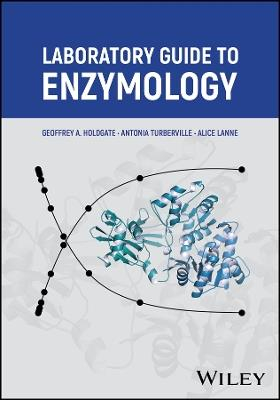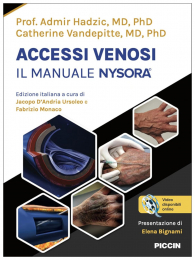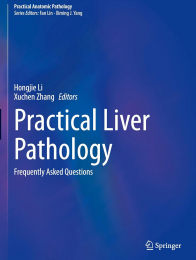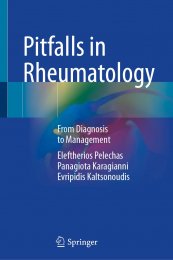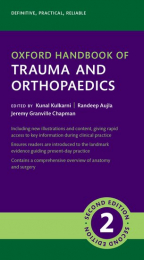Non ci sono recensioni
DA SCONTARE
Enzymes are among the fundamental building blocks of life, the proteins that catalyze some of the most important metabolic and biochemical reactions that sustain the complex organism. Understanding the unique structures and mechanisms of individual enzymes is key to medical treatment and pharmaceutical intervention, making it an especially essential aspect of drug discovery. The topic can appear challenging, however, as it requires command of interdisciplinary research combining biology, chemistry, and mathematics.
Laboratory Guide to Enzymology brings these disciplines together to offer a practical, accessible overview of the lab-based work of creating effective enzyme essays. Beginning with a guide to the fundamentals of enzyme theory, the book connects that theory to a range of modern methods of computation and experimentation. The result is a detailed but highly readable volume elucidating the cornerstone of drug discovery research.
Laboratory Guide to Enzymology readers will also find:
- Specific examples of enzyme application in drug discovery
- Detailed discussion of topics including enzyme catalysis, chemical kinetics, steady-state assays, and many more
- Appendices including a range of vital supplementary material
Laboratory Guide to Enzymology is ideal for all biomedical and pharmaceutical researchers working in enzymology and assay development, as well as advanced students in the biomedical or biochemical sciences looking to develop a working knowledge of this field of research.
Preface xiii
Acknowledgments xv
1 Introduction to Proteins and Enzymes 1
1.1 Protein Structure 1
1.1.1 Primary Structure 1
1.1.2 Secondary Structure 1
1.1.3 Tertiary Structure 5
1.1.4 Quaternary Structure 6
1.1.5 Protein Structure Prediction 6
1.2 Enzymes 9
References 15
2 Binding Equilibria and Kinetics 17
2.1 Introduction to Chemical Kinetics 17
2.2 Introduction to Binding Kinetics 22
2.3 Ligand Binding to Single Binding Site 23
2.4 Kinetic Approach to Equilibrium 26
2.5 Methods for Measuring Protein-ligand Binding 27
2.6 Ligand Depletion (Tight Binding) 29
2.8 Ligand Competition 34
References 35
3 Protein QC and Handling 37
3.1 Introduction 37
3.2 Confirming Protein Identity 37
3.2.2 Peptide Mapping 38
3.2.3 Edman Sequencing 39
3.3 Protein Purity 39
3.3.1 Sds-page 40
3.3.2 Dynamic Light Scattering (DLS) 40
3.3.3 Analytical Gel Filtration 41
3.3.4 Analytical Ultracentrifugation 42
3.4 Concentration 43
3.4.1 UV–Vis Spectrum 44
3.4.2 Bradford Assay 44
3.5 Functionality 46
3.5.1 Ligand Binding 46
3.5.1.1 Itc 46
3.5.1.2 Spr 46
3.5.2 Functional Studies 46
3.6 Stability 48
3.6.1 Differential Scanning Calorimetry (DSC) 48
3.6.2 Differential Scanning Fluorimetry (DSF) 49
3.6.3 Circular Dichroism 51
3.6.4 Selwyn’s Test 51
References 52
4 Buffers and their Use in the Study of Enzyme Mechanism 55
4.1 Introduction 55
4.1.1 Ionization and pK a 55
4.1.2 pH 57
4.1.3 Henderson-Hasselbalch Equation 57
4.1.4 Buffers 58
4.2 Buffering Capacity 60
4.3 Ionic Strength 60
4.4 Change in pH with Temperature 62
4.5 Choice of Buffer 63
4.6 Characteristics of Ionizing Groups in Proteins 65
4.7 Effect of pH on Enzyme Activity 66
4.7.1 Assumptions Required for the Analysis of pH Dependence 66
4.7.2 General Rate Equation for pH Dependence 67
4.7.3 Fitting pH Dependence 70
4.7.3.1 Double Ionizing Systems 70
4.7.3.2 Singularly Ionizing Systems 72
4.8 Effect of Solvent and Ionic Strength 73
References 73
5 Steady-state Assays and their Design 75
5.1 Introduction 75
5.2 The Pre-steady State 75
5.3 Steady-state Assays 77
5.4 Assay Development 78
5.4.1 Requirements for Method Development 79
5.4.2 Different Types of Enzymes Assays 79
5.4.2.1 Direct Continuous Assay 79
5.4.2.2 Indirect Assays 80
5.4.2.3 Discontinuous Indirect Assays 80
5.4.2.4 Continuous Indirect Assays 80
5.4.2.5 Coupled Assays 80
5.5 Blank Rates 81
5.6 The Assay Development Process 81
5.6.1 Initial Assay Scoping 81
5.6.2 Substrate Dependence 83
5.6.2.1 Non-Michaelian Kinetics 87
5.6.2.2 Multiple Substrates 89
5.6.3 Plate Type 92
5.7 Assay Optimization 93
5.7.1 Factorial Experimental Design (FED) 93
5.7.2 Coupling Enzyme Considerations 96
5.8 Kinetic Characterization 96
5.8.1 Substrate Concentration 96
5.9 Assay Adaptability 97
5.9.1 Tool Compounds 97
5.9.2 DMSO Tolerance 97
5.9.3 Assay Stability 97
5.9.4 Triage Assays 98
5.10 Assay Evaluation (Validation) 98
5.10.1 Calculations 100
5.10.2 Assessing Plate Uniformity 102
5.10.3 Acceptable Assay Performance Criteria 104
References 105
6 Enzyme Inhibition 107
6.1 Introduction 107
6.2 Substrate and Product Inhibition 108
6.3 Reversibility 109
6.3.1 Testing for Irreversible Inhibition 109
6.3.2 Rapidly Reversible Inhibition 110
6.4 The IC 50 Value 111
6.4.1 Determining the IC 50 Value 111
6.4.2 Use of pIC 50 111
6.4.3 Comparison of Potency 112
6.4.4 Concentration-response Curve Analysis 113
6.4.4.1 Bell-shaped Behavior 115
6.4.4.2 Weakly Active Compounds 116
6.4.4.3 Steep Curves 116
6.4.4.4 Partial Curves 116
6.4.4.5 Noisy Data 117
6.5 Identity of Substrate 117
6.6 Effect of Enzyme Concentration – Tight-binding Inhibition 118
6.7 Slow-binding Inhibition 120
6.7.1 Progress Curves for Slow-binding Inhibition 121
6.8 Slow, Tight-binding Inhibition 126
6.8.1 Conditions where Detection of Slow-binding may be Precluded 128
6.9 Irreversible Inhibition 128
6.10 Presence of Two Inhibitors 131
6.11 Non-specific Inhibition 133
6.11.1 Common Technology Hitters 134
6.11.1.1 UV-light Interference 134
6.11.1.2 Detection System Interference 134
6.11.2 Chemical Reactivity 135
6.11.3 Aggregators 136
6.11.4 Redox Reactivity 137
6.11.4.1 Oxidation of Aromatic Amino Acid Residues 137
6.11.4.2 Protein Unfolding 137
6.11.5 Denaturation 139
6.11.6 Metal Ion Contamination 139
References 140
7 Enzyme Activation and Its Comparison with Inhibition 143
7.1 Introduction 143
7.2 Mechanisms for Enzyme Activation 143
7.2.1 Essential Activation 143
7.2.1.1 Essential Cationic Activation 145
7.2.2 Non-essential Activation 145
7.2.2.1 Non-essential Cationic Activation 146
7.2.3 A Comment on Nomenclature: K-type and V-type Classification 147
7.2.4 De-inhibition 148
7.3 Challenges for Identifying Non-essential Enzyme Activators 148
7.3.1 Enzymes have Evolved to be Active 149
7.3.2 Lack of Tool Compounds 149
7.3.3 Maintaining Steady State 149
7.3.4 Mechanistic Considerations 149
7.3.5 Assay Design and Variability 150
7.4 Addressing the Challenges of Activator Discovery 152
References 153
8 Mechanism of Action 155
8.1 Introduction 155
8.2 Mechanisms of Inhibition 155
8.2.1 Competitive Inhibition 156
8.2.2 Mixed Noncompetitive and Pure Noncompetitive Inhibition 159
8.2.3 Uncompetitive Inhibition 161
8.3 Choosing Between Different Types of Inhibition 162
8.4 Interpretation of Mechanism of Inhibition 163
8.5 Effect of Multiple Substrates and Assignment of Mechanism 164
8.6 Binding Site may not Equal Mechanism 168
8.6.1 Substrate Competitive Inhibitors at Allosteric Sites 169
8.6.2 Noncompetitive Binding giving Competitive Inhibition 169
8.6.3 Competitive Binding giving Uncompetitive Inhibition 170
8.7 Specificity 171
8.7.1 Effect of Increasing [S] 171
8.7.2 Effect of [I] 172
8.8 Activation Mechanisms and Comparison with Inhibition 173
References 175
9 Data Analysis 177
9.1 Introduction 177
9.2 Statistical Analysis of Enzyme Kinetic Data 177
9.3 Least Squares Fitting 177
9.4 Nonlinear Regression 178
9.5 Weighting of Experimental Data 182
9.6 Evaluation of Potential Different Models 183
9.6.1 Distribution of Residuals 183
9.6.1.1 The Runs Test 184
9.6.2 Magnitude of Standard Errors 184
9.6.3 Quantitative Evaluation 185
9.6.3.1 F-test 185
9.6.3.2 Akaike Information Criterion 186
9.6.3.3 Absolute Goodness of Fit 187
9.7 Minimum Significant Ratio 188
9.8 Two Independent Variables 189
9.8.1 Global Fitting 190
9.8.2 Reducing and Repeating and Reducing Only 190
9.8.2.1 Reducing Only 191
9.8.2.2 Reducing and Repeating 191
References 192
10 Molecular Interactions between Proteins and Small Molecules 193
10.1 Introduction 193
10.2 Binding Affinity is a Function of Difference Energy 194
10.3 Interactions between Charged or Polar Groups 196
10.3.1 Electrostatic Interactions 196
10.3.2 Hydrogen Bonds 197
10.4 Nonpolar Interactions 199
10.4.1 van der Waals Interactions 199
10.4.2 Hydrophobic Interactions 202
10.5 Changes in Hydrophobicity on Chemical Substitution 202
10.6 Entropy 203
References 204
11 Applications in Drug Discovery 207
11.1 Introduction 207
11.2 Pre-screening 207
11.2.1 Enzyme Considerations 208
11.2.2 Substrate Considerations 209
11.2.3 Enzyme Mechanism Considerations 210
11.3 Post-screening 211
11.3.1 Measuring Potency 211
11.3.2 Reversibility 212
11.3.3 Inhibitor Mechanistic Characterization 213
11.3.3.1 Combining Enzyme Kinetics and Biophysics 214
11.3.4 Tight Binding 215
11.3.5 Undesired Mechanisms 216
11.4 In Vitro Versus in Cellulo Enzyme Kinetics 217
References 219
Appendix A Basic Math and Statistics 221
A. 1 Algebra 221
A. 2 Fractions 222
A. 3 Indices 222
A. 4 Logarithms 223
A. 5 Quadratic Equations 223
A. 6 Straight Lines 223
A. 7 Functions 223
A. 8 Inequalities 224
A. 9 Differentiation 224
A. 10 Integration 226
A. 11 Series 227
A. 12 Statistics 227
A. 13 Propagation of Errors 228
A. 14 Using Logged Values 228
A. 15 Precision, Accuracy, Significant Figures and Rounding 228
A. 16 Dimensional Analysis 230
Appendix B Some Useful Key Formulas 233
B.1 Assay Reagent Calculations 233
B.2 Assay Statistics 234
B.3 Curve Fitting and Calculation of Parameters 235
B.4 Thermodynamics 236
B.5 Other Useful Formulas 237
Appendix C Constants, Prefixes, Conversions 239
C.1 Useful Physical Constants 239
C.2 Prefixes Used in the SI System 239
C.3 Conversion Factors 240
C.4 Greek Alphabet 241
Appendix D Common Symbols and Abbreviations and Their Units 243
D.1 Common Symbols 243
D.2 Common Abbreviations 245
Appendix E Glossary 247
Appendix F Key Derivations 253
F. 1 Langmuir Isotherm, Assuming Rapid Equilibrium 253
F. 2 Michaelis-Menten, Assuming Rapid Equilibrium 254
F. 3 Michaelis-Menten, Assuming Steady-state 255
F. 4 Rate is Directly Proportional to Free Enzyme 255
F. 5 Two Substrate Reactions 256
F. 6 Dose-response Equation to Calculate K I 257
F. 7 Derivation of Substrate Inhibition, Assuming Rapid Equilibrium 257
F. 8 Competing Ligands, Assuming Rapid Equilibrium 258
F. 9 Tight Binding 259
F. 10 Single Exponential, with First-order Rate Equation 260
F. 11 Protein Double Ionization 261
F. 12 Protein Single Ionization 262
F. 13 Derivation of the Integrated Rate Equation for Slow-binding Inhibition Described by a Two-step Mechanism 263
F. 14 Essential Activation 266
F. 15 Non-essential Activation 267
Appendix G Useful Software Packages for Analyzing Enzyme Kinetic Data 269
G.1 Desktop Based Tools 269
G.2 Web-Based Tools 270
G.3 Other Useful Online Resources 271
Index 273

